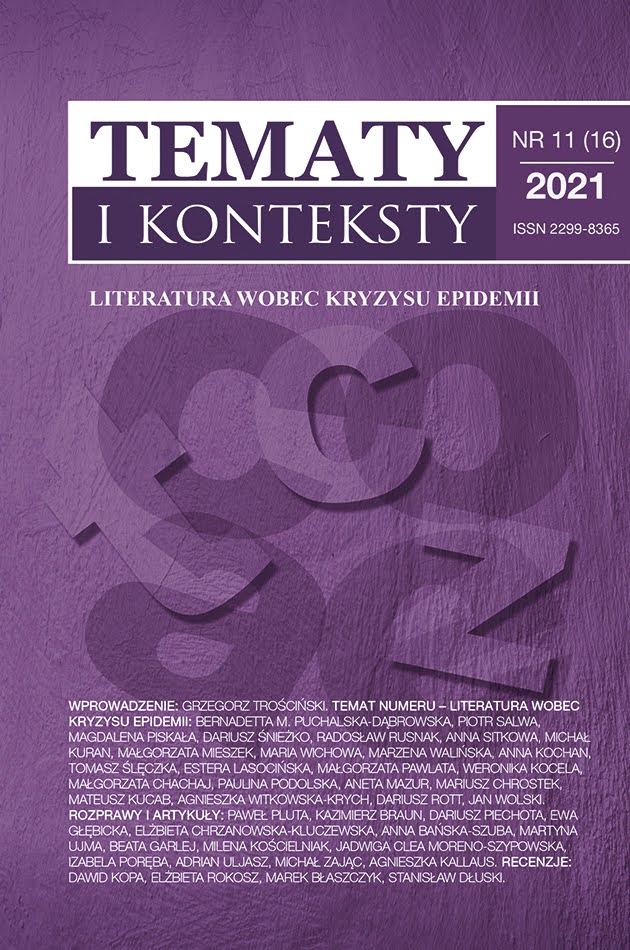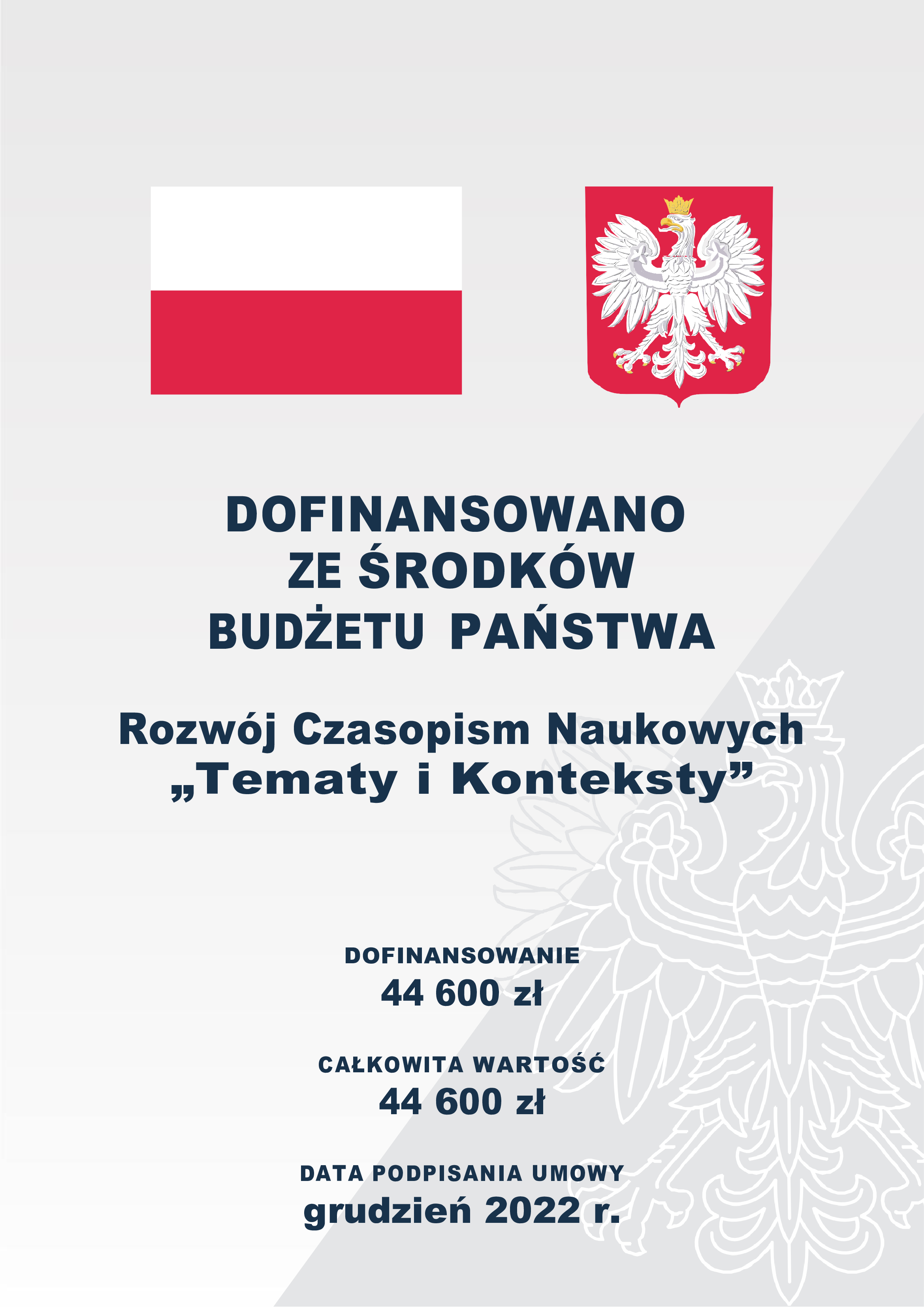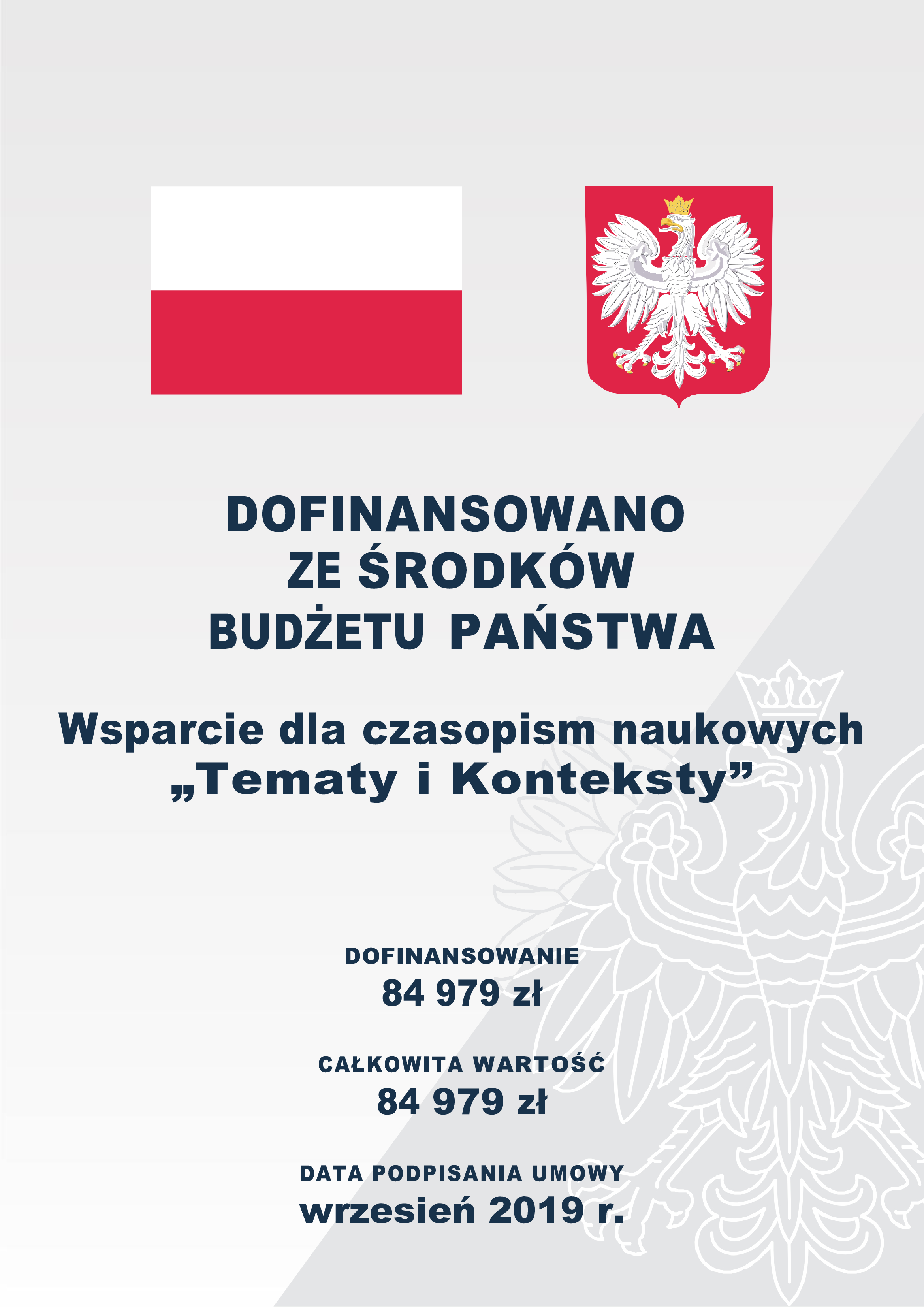Chłodno i rzeczowo. Kazimierz Sarnecki o chorobach na dworze Jana III Sobieskiego
DOI:
https://doi.org/10.15584/tik.2021.13Słowa kluczowe:
Jan III Sobieski, Karol Stanisław Radziwiłł, choroba, Rzeczpospolita Polska, XVII wiek, diariusz, Kazimierz SarneckiAbstrakt
Przedmiotem artykułu jest sposób mówienia o chorobach w pismach Kazimierza Sarneckiego, który był rezydentem podkanclerzego litewskiego Karola Stanisława Radziwiłła na dworze Jana III Sobieskiego.
Podstawowym zadaniem Sarneckiego było pozyskiwanie informacji o tym, co działo się na dworze Sobieskiego – przede wszystkim o stanie zdrowia króla, a w dalszej kolejności innych sprawach, nawet niewielkiej wagi. Sarnecki regularnie prowadził diariusz, który co jakiś czas wysyłał Radziwiłłowi wraz z osobno napisanym listem.
W diariuszu najwięcej miejsca poświęcał królowi – świadczy o tym liczba wzmianek na jego temat oraz ich umiejscowienie w tekście (każdy wpis Sarnecki rozpoczyna od zapisania, co robił król i jaki był jego stan zdrowia, czy przyjmował leki oraz jakim zabiegom medycznym był poddawany, a dopiero później relacjonuje pozostałe zdarzenia). Poza tym notował to, co dotyczyło zdrowia królowej Marii Kazimiery, siostry króla a matki Karola Stanisława Katarzyny z Sobieskich Radziwiłłowej, dzieci królewskiej pary (Jakuba, Teresy Kunegundy, Aleksandra oraz Konstantego), członków dworu oraz odwiedzających go gości. Obok typowych dla siedemnastowiecznej Rzeczypospolitej schorzeń odnotowywał również nierzadko bardzo luźno związane z medycyną sprawy o anegdotycznym, a nawet magicznym charakterze. Gdy sam ciężko zachorował, nie apelował do współczucia swego patrona, a zapewniał, że mimo choroby wszystkie obowiązki wypełni rzetelnie za pomocą osób trzecich, by interesy Radziwiłła nie doznały szkody.
Listy Sarneckiego wyglądają inaczej – donosi w nich przede wszystkim o własnych działaniach podejmowanych na rzecz patrona, czasem prostuje lub uzupełnia zapisane w diariuszu informacje. Zdrowie i choroby schodzą tu na plan dalszy i zajmują zdecydowanie mniej miejsca niż w diariuszu.
Zarówno w diariuszu, jak i w listach, zapiski Sarneckiego zawsze prowadzone są w sposób chłodny i rzeczowy, niemal zupełnie pozbawiony komentarza. W relacjach o chorobach uderza zupełny brak śladów współczucia; nawet te fragmenty, które dotyczą go osobiście, są wolne od emocji. Problemy zdrowotne są faktem, o którym informuje, ale niczym więcej.
Downloads
Bibliografia
Sarnecki K., Pamiętniki z czasów Jana Sobieskiego. Diariusz i relacje z lat 1691–1696, oprac. J. Woliński, Wrocław 1958.
Gath I., Deformowanie prawdy medyczno-historycznej o chorobie i śmierci króla Polski Jana III Sobieskiego, przeł. D. Burda-Fischer, „Archiwum Historii i Filozofii Medycyny” 2017.
Komaszyński M., Teresa Kunegunda Sobieska, Warszawa 1982.
Lesiński J., Spory o dobra neuburskie, „Miscellanea Historico-Archivistica” 1996 (t. 6), s. 95–132.
Pietrzak J., Księżna dobrodziejka. Katarzyna z Sobieskich Radziwiłłowa (1634–1694), Warszawa 2016.
Pietrzak J., Pod egidą Sobieskiego. Kariera polityczna Karola Stanisława Radziwiłła w latach 1683–1696, w: Jarzmo Ligi Świętej? Jan III Sobieski i Rzeczpospolita w latach 1684–1696, red. D. Milewski, Warszawa 2017, s. 21–45.
Rachuba A., Radziwiłł Karol Stanisław, w: Polski słownik biograficzny, t. 30, Warszawa 1987, s. 240–248.
Rytel J., „Pamiętniki” Paska na tle pamiętnikarstwa staropolskiego. Szkice z dziejów prozy narracyjnej, Wrocław 1962.
Sajkowski A., Nad staropolskimi pamiętnikami, Poznań 1964.
Sajkowski A., W stronę Wiednia. Dole i niedole wojenne w świetle listów i pamiętników, Poznań 1984.
Sarnecki Kazimierz, w: Polski słownik biograficzny, t. 35, Warszawa–Kraków 1987, s. 208–209.
Skrzypietz A., Królewscy synowie – Jakub, Aleksander i Konstanty Sobiescy, Katowice 2011.
Ślęczka T., Świat zainteresowań siedemnastowiecznego magnata. Relacje Kazimierza Sarneckiego o dworze Jana III Sobieskiego, w: Epistolografia w dawnej Rzeczypospolitej, t. 7, red. P. Borek, M. Olma, Kraków 2017, s. 225–240.
Tuszewski M., Żaba pod językiem. Medycyna ludowa Żydów aszkenazyjskich przełomu XIX i XX wieku, Kraków–Budapeszt 2015.
Wójcik Z., Jan Sobieski, Warszawa 1983.
Pobrania
Opublikowane
Jak cytować
Numer
Dział
Kategorie
Licencja
Prawa autorskie (c) 2021 Tematy i Konteksty

Utwór dostępny jest na licencji Creative Commons Uznanie autorstwa – Użycie niekomercyjne – Bez utworów zależnych 4.0 Międzynarodowe.




